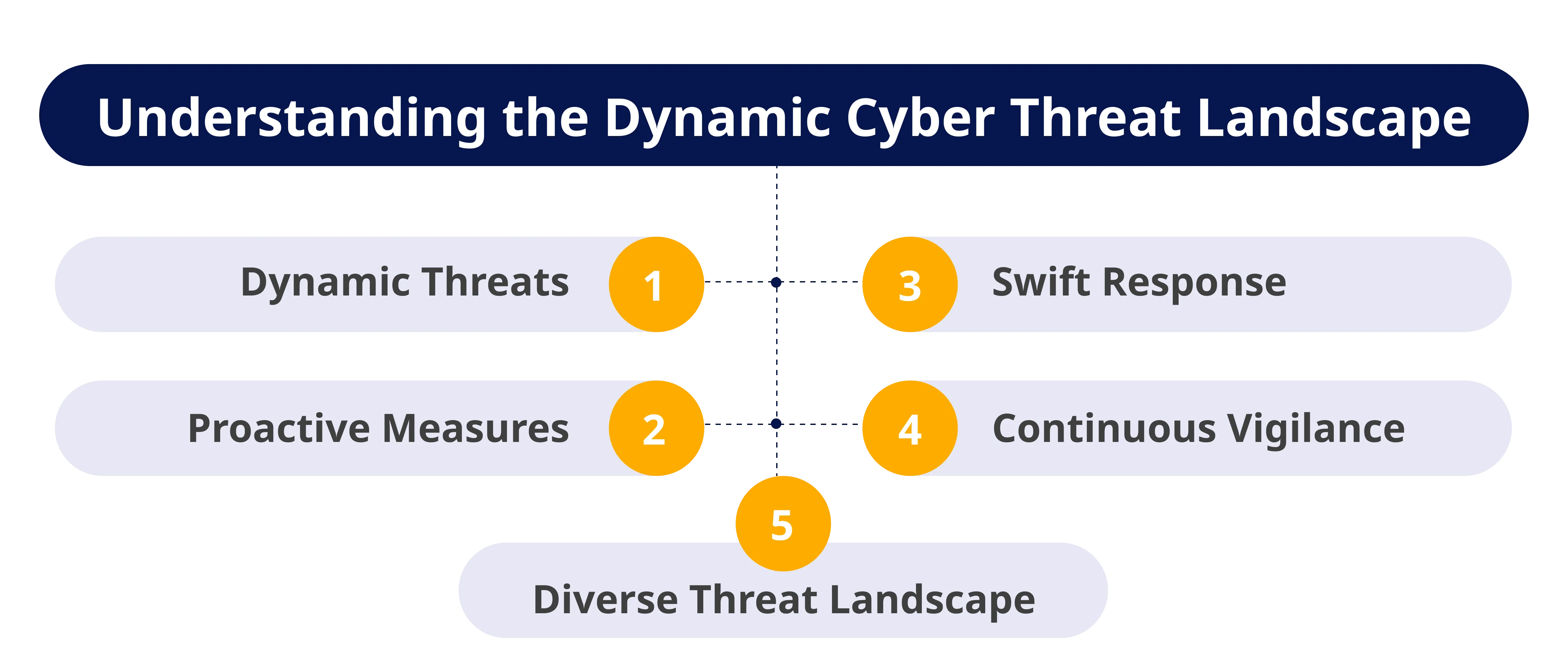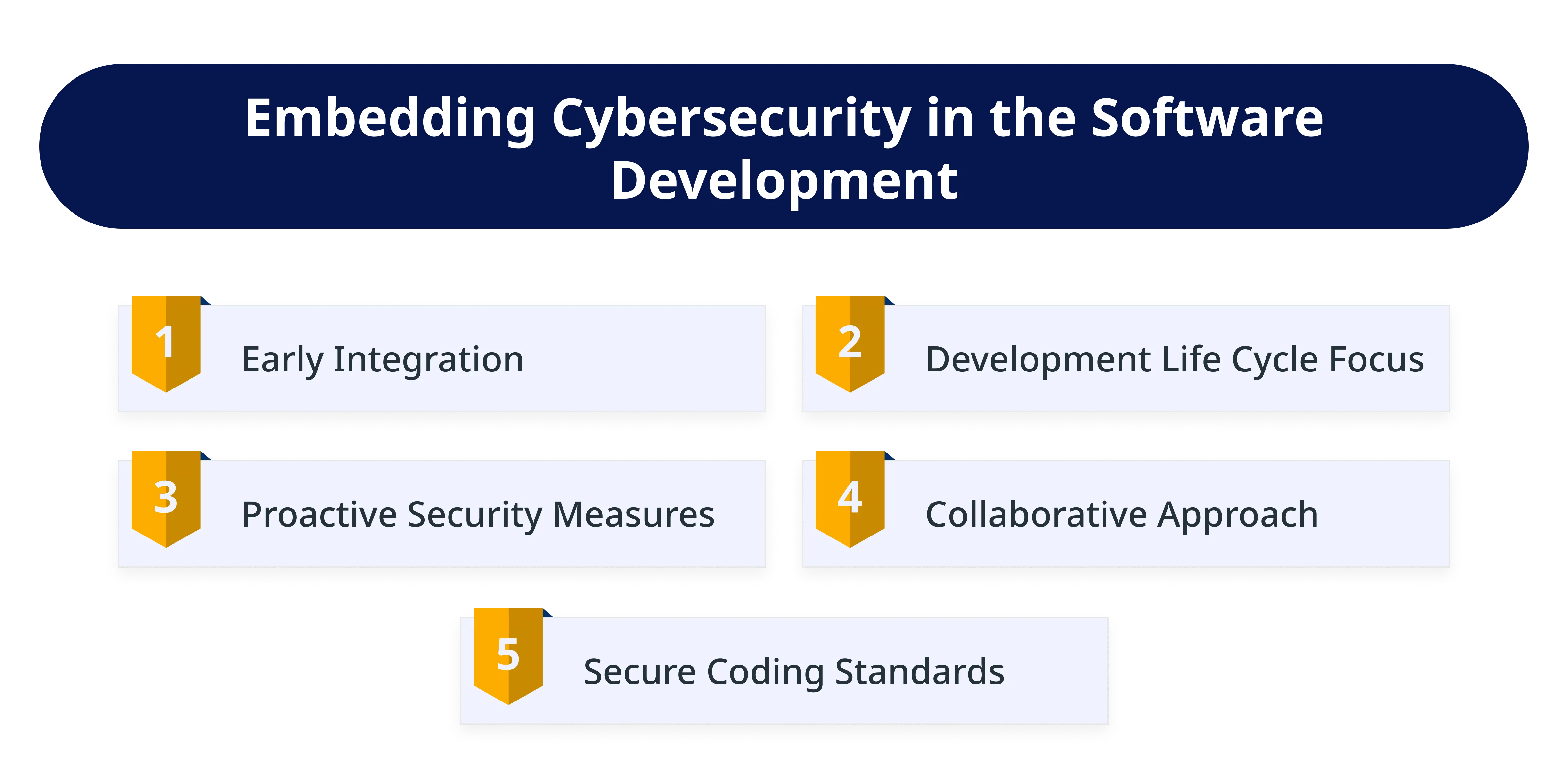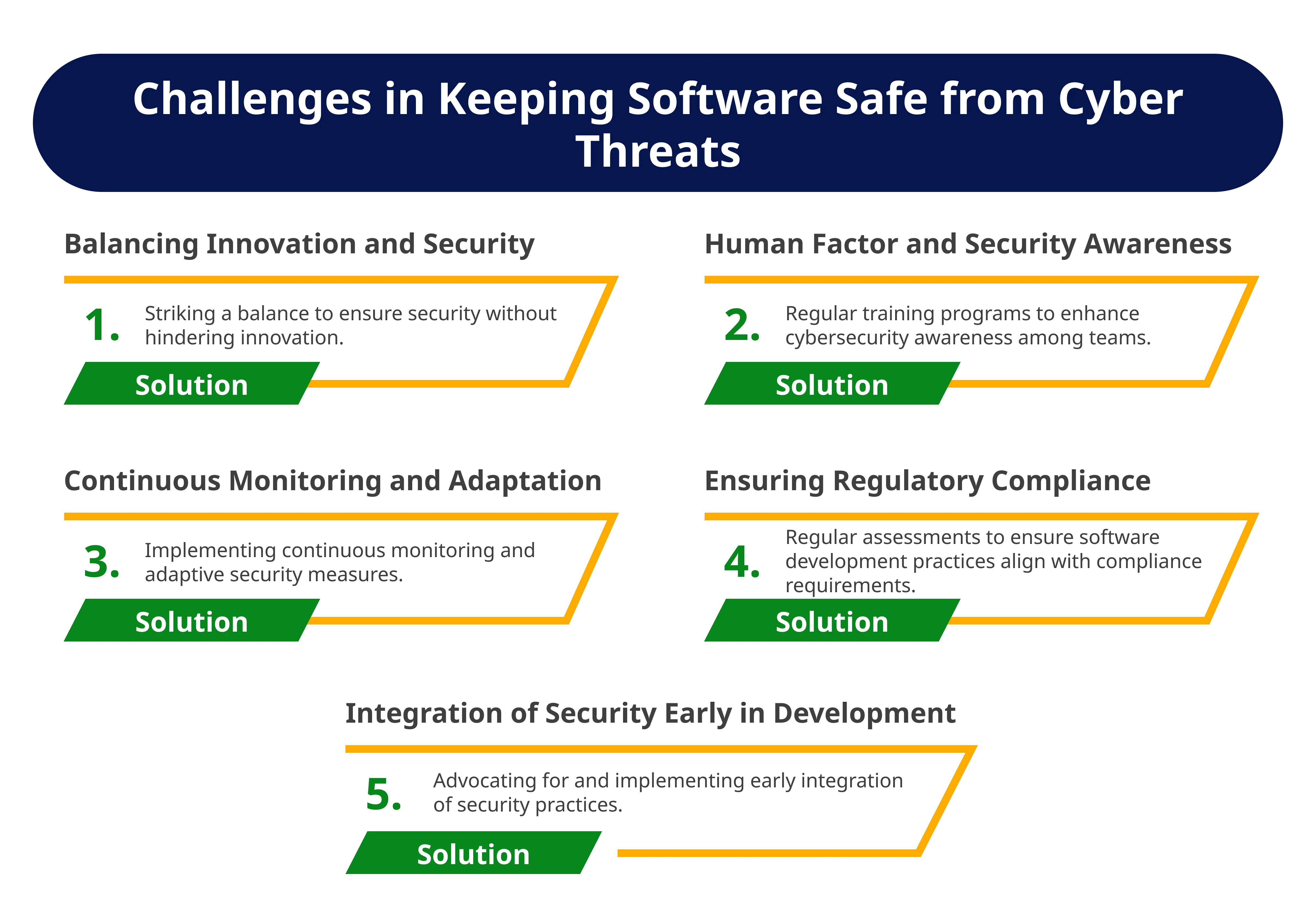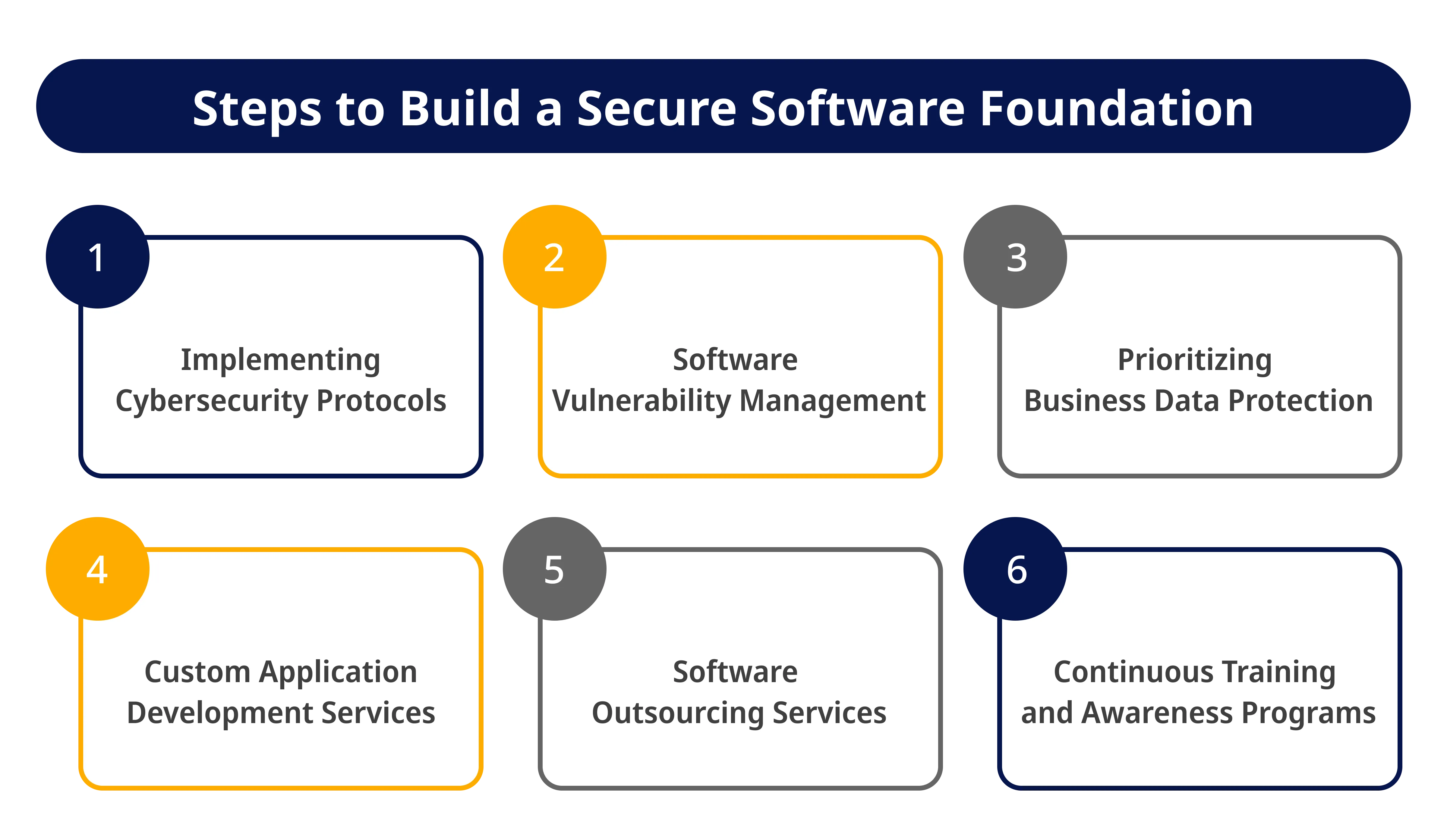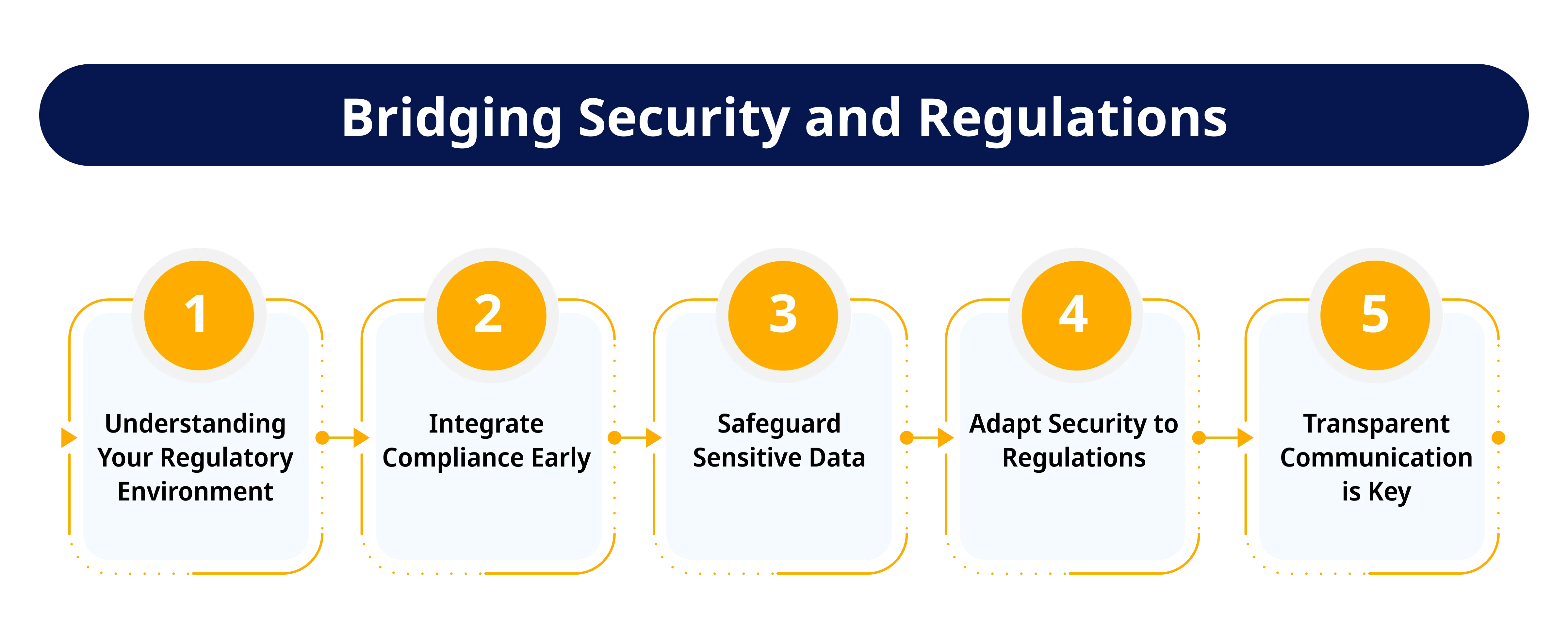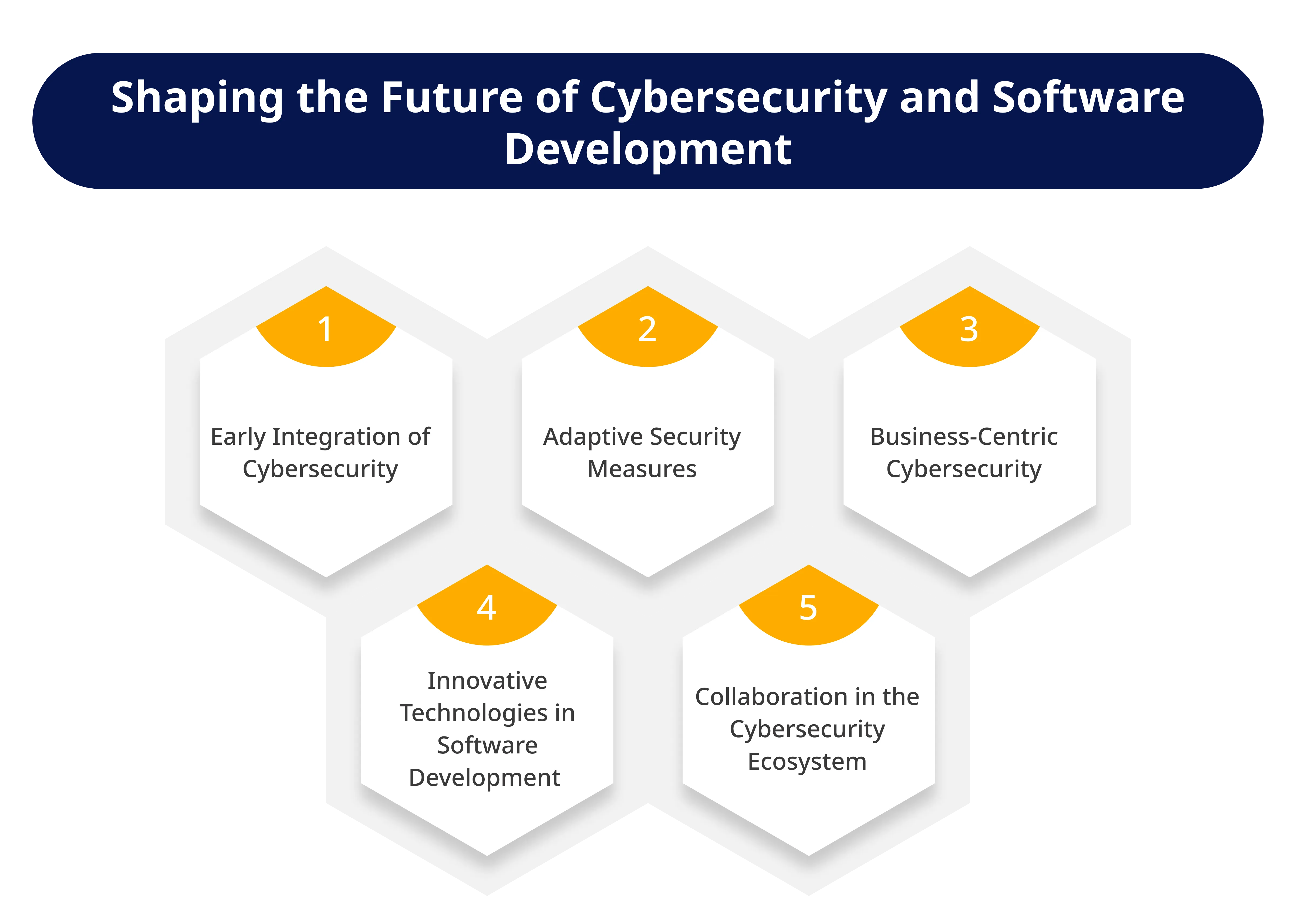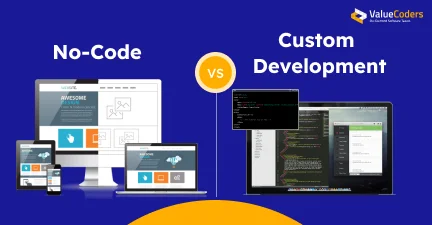Have you ever considered how a data breach could cripple your business overnight?
According to a post by Forbes, global cybercrime damage costs are estimated to rise by 15% per year over the next two years, reaching $10.5 trillion USD annually by 2025
With cyberattacks growing in frequency and severity, no modern company can ignore digital risks. But what level of cybersecurity investment is truly necessary? And how can businesses embed it directly into the software development lifecycle?
Let’s understand this with the help of this blog post that explores the growing need for “cyber resilience” in today’s interconnected economy and vulnerable online world.
We’ll address why cybersecurity can no longer be an afterthought and outline the potential damages of common attack vectors like data theft, ransomware, DDoS attacks, and malicious insiders.
We explain the processes that provide layered protection, from threat modeling to secure code reviews and robust access controls to continuous security monitoring.
Follow along for clear guidance on defending your company, safeguarding customers, and embedding the right culture of data security in the digital age.
Key Takeaways from the blog post:
- Discover the importance of safeguarding businesses in the digital age with cybersecurity in software development.
- Learn how to identify the ever-changing cyber threat landscape with proactive measures.
- Understand the significance of seamlessly integrating cybersecurity into the entire software development process.
- Tackle common challenges such as balancing innovation, addressing human errors, and early security integration.
- Implement best security practices, including cybersecurity protocols, vulnerability management, and data protection.
- Explore the coordination between cybersecurity and regulatory compliance for overall business resilience.
Also read: A Guide To Security In Software Development – White Paper
The Evolving Threat Landscape
Staying ahead of potential threats is paramount when it comes to cybersecurity within software development.
As businesses increasingly count on digital platforms, the importance of integrating robust security practices becomes more evident.
Here’s a concise exploration of this dynamic environment:
When it comes to cybersecurity in software development, recognizing the dynamic nature of cyber threats is fundamental to building secure software practices. So, here are some of the essential aspects that you must be aware of:
- Adapting to New Threats: The digital world constantly changes, with cyber threats evolving rapidly. From malware to identifying phishing attacks, understanding the diverse range of threats is the first step in prevention.
- Integration of Software Development Security: Cybersecurity in software development involves more than just an add-on at the end. It’s a mindset integrated into the entire development life cycle, from ideation to deployment.
- Proactive Cyber Threats Prevention: Waiting for an attack is no longer an option presently. Adopting proactive measures is crucial. Identify vulnerabilities before they are manipulated and implement preventive measures accordingly.
- Keep Up With Software Security Practices: Top software security tips & best practices software practices include various strategies. From regular security audits to code reviews, staying informed about the latest practices is essential.
Understanding the evolving threat landscape requires a combination of vigilance, education, and a commitment to integrating cybersecurity seamlessly into the fabric of software development.
By prioritizing business cybersecurity, you safeguard your digital assets and contribute to a more secure online environment.
ValueCoders offers cutting-edge cybersecurity solutions to secure your software against threats.
Integrating Cybersecurity into Software Development
When considering cybersecurity in software development, its integration is not just a checkbox—it’s a dynamic strategy that safeguards your digital assets.
Here’s a practical guide on seamlessly embedding cybersecurity into software development to keep your project safe and secure:
- Get Web Development Expertise: Firstly, you should have experts in your team. Therefore, hire dedicated software developers to enlist professionals who write code and prioritize cybersecurity. Having a team well-versed in security practices is your first line of defense.
- A Guide to Security in Software Development: Next, establish a comprehensive guide outlining security practices specific to your software development process. This document should serve as a reference for your team, emphasizing the importance of security at every stage.
- Custom Application Development Services: Custom application development services ensure security is a core component of the offering. Collaborate with developers who understand the nuances of secure coding and can tailor solutions to your specific needs.
- Secure Coding Standards: Define and enforce secure coding standards. These standards act as guidelines for developers, confirming that security considerations are an integral part of the code they produce.
- Cybersecurity Protocols: Next is integrating industry-standard cybersecurity protocols into your development workflow. This includes measures like encryption, secure communication channels, and access controls.
- Software Vulnerability Management: Implement a robust system for identifying and addressing software vulnerabilities. Regularly scan your codebase, prioritize fixes, and ensure a proactive stance against potential threats.
- Business Data Protection: Lastly, prioritize business data protection by implementing encryption, access controls, and data backup strategies. Safeguarding sensitive information is paramount to maintaining trust with users and stakeholders.
By adopting these practices, you fortify your software against potential threats and foster a culture of security within your development team.
Remember, cybersecurity is not an add-on; it’s a fundamental aspect of creating resilient software in the face of an ever-changing threat landscape.
ValueCoders ensures robust cybersecurity for businesses against data breaches.
Common Cybersecurity Challenges in Software Development
In the intricacy of software development, cybersecurity challenges often pose formidable obstacles to creating a robust and secure digital infrastructure.
Addressing these challenges is pivotal for businesses prioritizing cybersecurity in software development. Here’s an insightful exploration of common hurdles:
- Integration of Security Early in Development: Incorporating security measures from the initial stages of development is often overlooked. Establishing secure software practices requires a proactive approach.
- Balancing Innovation and Security: The fast-paced nature of software development can lead to a conflict between innovation and security. Striking a balance is essential to prevent vulnerabilities while fostering innovation.
- Human Factor and Security Awareness: Human error is Often the weakest link in cybersecurity. Cultivating a culture of security awareness among teams is critical to mitigate risks associated with unintentional lapses.
- Continuous Monitoring and Adaptation: Cyber threats are dynamic. Implementing top software security tips involves constant monitoring and adapting security measures to evolving threats.
- Ensuring Regulatory Compliance: Adhering to regulatory requirements adds a layer of complexity. Bridging the gap between secure software development and compliance is a challenge many businesses face.
ValueCoders empowers businesses with comprehensive cybersecurity strategies.
Best Practices for Cybersecurity in Software Development
By emphasizing secure software practices, businesses can proactively address these challenges, mitigating risks and ensuring a robust defense against cyber threats.
Remember, in business cybersecurity, foresight and adaptability are your greatest allies.
Here, we delve into best practices that encompass cybersecurity protocols, software vulnerability management, and the protection of critical business data:
Best Practices for Cybersecurity in Software Development: A Comprehensive Guide
- Implementing Cybersecurity Protocols: Cybersecurity protocols serve as the foundation for a secure development process. Prioritize the integration of protocols that align with industry standards and regulatory requirements.
- Software Vulnerability Management: Regularly assess and address vulnerabilities in your software. Establish a systematic approach for identifying, prioritizing, and mitigating potential security risks.
- Prioritizing Business Data Protection: Recognize the criticality of business data. Employ encryption, access controls, and secure storage practices to safeguard sensitive information from unauthorized access.
- Get Custom App Development Expertises: When opting for custom application development services, ensure that cybersecurity is an integral part of the process. Collaborate with developers who prioritize secure coding practices.
- Confer Software Outsourcing Services: If planning for software outsourcing services, choose partners with a strong focus on cybersecurity. Clearly define security expectations, conduct regular audits, and ensure compliance with your cybersecurity standards.
- Continuous Training and Awareness Programs: Human error is a significant factor in cybersecurity incidents. Conduct regular training programs to enhance the cybersecurity awareness of your development team.
Adopting these best practices establishes a robust cybersecurity framework within software development.
A proactive & holistic approach is key to managing vulnerabilities, protecting business data, or leveraging external services.
By incorporating these practices into your software development lifecycle, you not only enhance the security of your applications but also fortify the resilience of your entire business ecosystem.
Also Read: What Does Your Business Lose by Delaying Software Development?
ValueCoders delivers proactive cybersecurity, securing your business legacy.
Case Studies
In today’s connected world, keeping your company safe from online threats is super important. Let’s check out two stories of businesses that faced cybersecurity issues but handled them well:
Marriott International
In 2018, Marriott was hit by a big data breach, affecting many guests. But Marriott acted fast and told everyone what happened. Here’s what we can learn:
- Have a plan for when things go wrong: Marriott had a plan ready to fix things right away.
- Tell people the truth: Being honest about what’s happening helps everyone trust you more.
- Keep getting better: Always look for ways to strengthen your cybersecurity.
Colonial Pipeline
In 2021, Colonial Pipeline, a big oil pipeline company, got hit by a cyberattack that messed up fuel supplies. They talked with the attackers to fix things, and here’s what we can learn:
- Check for problems before they happen: Find and fix things that could cause trouble.
- Make your tech strong: Build computer systems that can handle attacks and get back up and running quickly.
- Team up with others: Work with the police, government, and experts to stop cyber threats.
Learning More from Tech and Experts
After hearing about Marriott and Colonial Pipeline, here are some more cool ideas to make your company’s cybersecurity better:
- Use Smart Tech: Make computers do the boring stuff, so your experts can focus on tricky problems.
- Know What’s Coming: Use special info to find out about new threats and stop them before they cause trouble.
- Teach Your Team: Show your team how to be safe online. This stops simple mistakes from causing big problems.
- Get Help from Experts: Sometimes, it’s smart to ask experts for advice and support. They know a lot about keeping things safe.
Keep an Eye Out and Keep Changing
To ensure Cybersecurity is an ongoing process, one day, you solve an issue, and another might be waiting for you—new tech and constant updates on the plan are need of the hour. Being ready and open to learning can keep your company safe from online baddies.
Detect threats early and secure your digital assets with VaueCoders.
Regulatory Compliance and Cybersecurity
Understanding and adhering to regulatory requirements is not just a checkbox—it’s a crucial aspect of ensuring a robust defense against evolving threats.
Let’s explore the symbiotic relationship between regulatory compliance and effective cybersecurity measures:
- Aligning with Secure Development Strategies: Develop custom software with security in mind from the start. Follow secure development strategies that integrate cybersecurity best practices.
- Hire Dedicated Software Development Teams: Assemble dedicated teams well-versed in cybersecurity for long-term vigilance. Foster collaboration between cybersecurity experts and development teams.
- Threat Mitigation in Software: Implement measures to identify and mitigate threats within software. Regularly update and adapt security measures based on evolving threats.
- Understanding Regulatory Compliance: Familiarize yourself with industry-specific regulations governing software security. Clearly define and communicate compliance requirements to development teams.
- Software Security Measures: Enforce robust software security measures, including encryption and access controls. Regularly audit and assess the effectiveness of security measures.
Also read: Software Product Development Process To Develop Successful Business Solutions
Key Connection Points
- Proactive Approach to Compliance: Viewing compliance not as a burden but as a proactive strategy enhances overall cybersecurity.
- Continuous Evaluation and Improvement: Regularly assess compliance with industry standards and adapt strategies for continuous improvement.
- Educating Teams on Regulatory Requirements: Ensure development teams understand the importance of and comply with regulatory guidelines.
By intertwining regulatory compliance with cybersecurity measures, businesses meet legal requirements and establish a strong defense against cyber threats.
Remember, in cybersecurity, compliance is not just a destination; it’s an ongoing commitment to excellence.
Trust ValueCoders for robust cybersecurity that stands the test of time.
Future Trends in Cybersecurity and Software Development
As the digital landscape evolves, the future of cybersecurity and software development is set to witness transformative trends that promise enhanced protection and resilience.
Let’s explore the upcoming developments straightforwardly:
Increased Integration of Cybersecurity in Software Development
Why: To address threats at every stage of development.
How: Embedding cybersecurity practices seamlessly from the initial ideation to the final deployment.
Elevation of Cybersecurity Best Practices
Why: A response to the dynamic nature of cyber threats.
How: Prioritizing and enforcing industry-best practices for enhanced security.
Also read: Web Security Unleashed: Shield Your Website From Cyber Threats
Focus on Cyber Resilience in Business
Why: Mitigating the impact of cyber incidents.
How: Develop strategies to not only prevent but also recover swiftly from cyberattacks.
Advancements in Custom Software Development:
Why: Tailoring software for specific business needs.
How: Leveraging cutting-edge technologies to create bespoke solutions with security at their core.
Evolution of Software Development Services:
Why: Meeting the demand for specialized and secure development.
How: Offering a diverse range of services, including cybersecurity-integrated solutions.
Key Takeaways for the Future
- Adaptive Security Measures: Flexibility in security protocols to adapt to emerging threats.
- Continuous Learning and Training: Keeping development teams updated on evolving cybersecurity practices.
- Business-Centric Cybersecurity: Aligning cybersecurity strategies with overall business resilience.
- Innovative Technologies in Software Development: Integration of artificial intelligence and automation for smarter and more secure software.
- Collaboration in the Cybersecurity Ecosystem: Emphasizing partnerships and information sharing to strengthen collective defenses.
By embracing these trends, businesses can not only stay ahead of potential threats but also contribute to building a more secure and resilient digital environment.
Also read: Cybersecurity In Software Development: Why It Matters More Than Ever
Final Words
As we’ve gone through the importance of integrating cybersecurity seamlessly into software development, learned from real-world case studies, and glimpsed into future trends, it’s evident that safeguarding our digital landscape requires vigilance, adaptability, and collaboration.
In today’s interconnected world, where businesses succeed in custom software development and dedicated teams, the fusion of cybersecurity best practices and regulatory compliance emerges as a formidable defense.
The lessons learned from businesses like Marriott and Colonial Pipeline emphasize the importance of proactive measures and transparent communication.
Looking ahead, the future promises innovation, with advancements in custom software development and a heightened focus on cyber resilience.
As businesses evolve, so must their cybersecurity strategies, adopting security measures with the support of Software Development Services like ValueCoders, your project can be
By prioritizing secure practices, staying informed about emerging threats, and fostering collaboration, businesses can navigate challenges successfully and contribute to building a safer and more robust digital ecosystem for generations to come.

